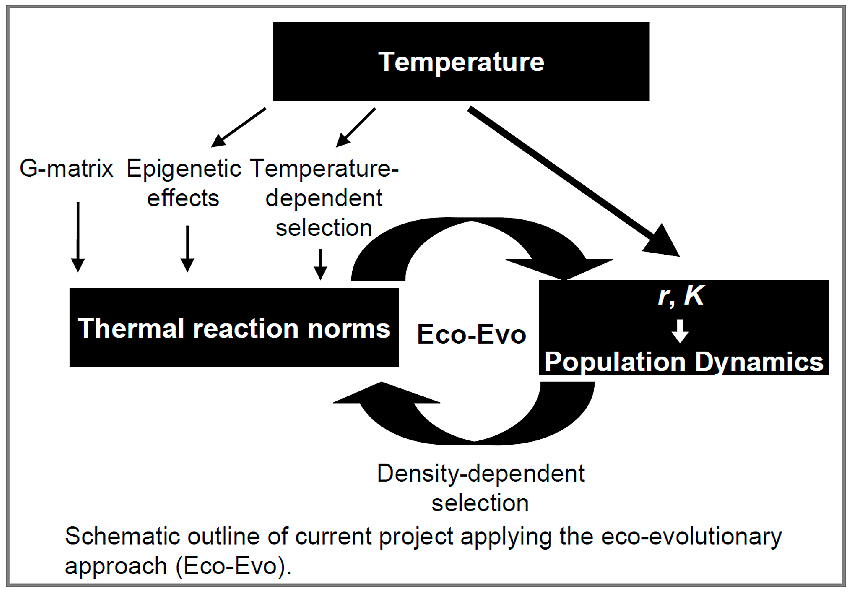What Are Our Aims?
What are our aims?
What are our aims?
Empirical studies on effects of environmental change typically focus either on the direct and immediate effects on individual characteristics (such as growth rate, longevity, fecundity) and corresponding effects on population abundance changes, or on long term evolutionary changes.
Yet, it is becoming increasingly clear that these two processes occur simultaneously and may influence each other. For example, an environmental change may cause mean reproductive success to decrease, which in turn may cause the population abundance to decline. At the same time, the environmental change may cause certain individual characteristics to be favored (i.e. having higher fitness) over others previously favored ones, resulting in evolutionary changes. This in turn may cause further change in population abundance. And conversely, the change in population abundance may by itself cause a change in which characteristics that have the highest fitness through what is called density-dependent selection. Understanding such feedback mechanisms is challenging, and choice of appropriate model systems is crucial for successful studies.
In this project we will use a highly suitable model organism (Daphnia magna), which is representative for a wide range of key species in freshwater and marine food webs, and focus on one easily controlled environmental factor (temperature). We will study some target traits which may have effects on fitness that depend on both temperature and population density, and determine their potential for evolutionary changes. We will then quantify how variation in temperature- and density-responses in these traits influences fitness across thermal regimes and population densities. The results obtained are expected to yield novel understanding of links between evolutionary and ecological responses to environmental change in general, and more specifically for temperature changes.

